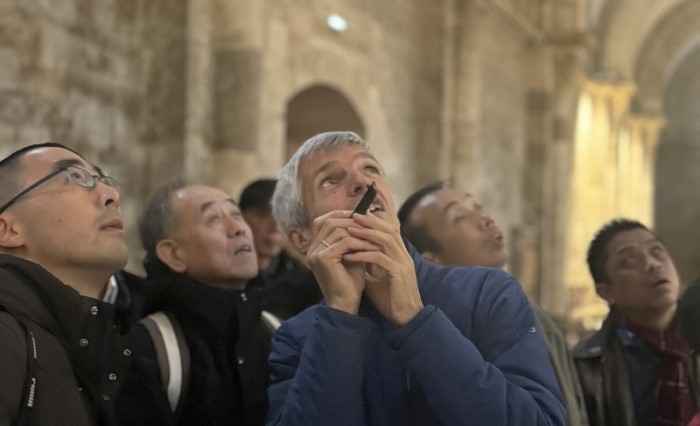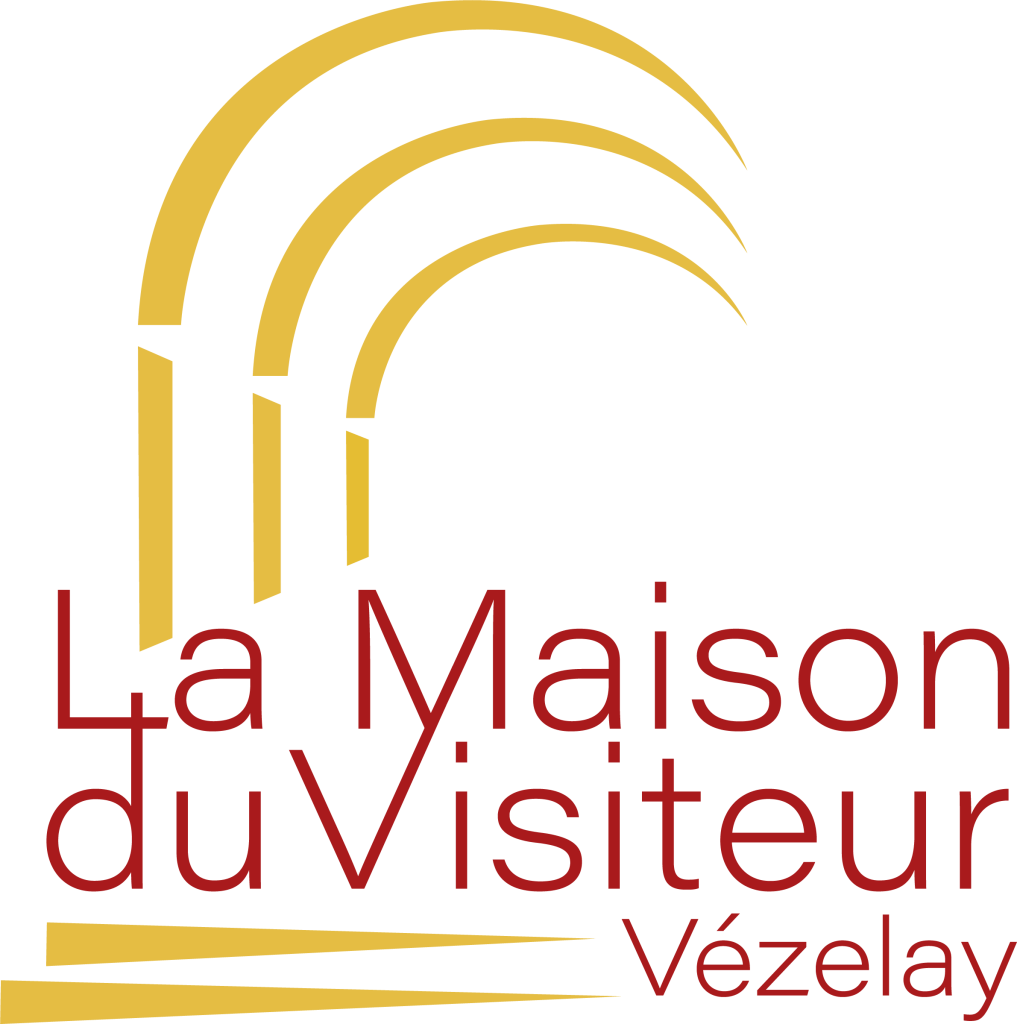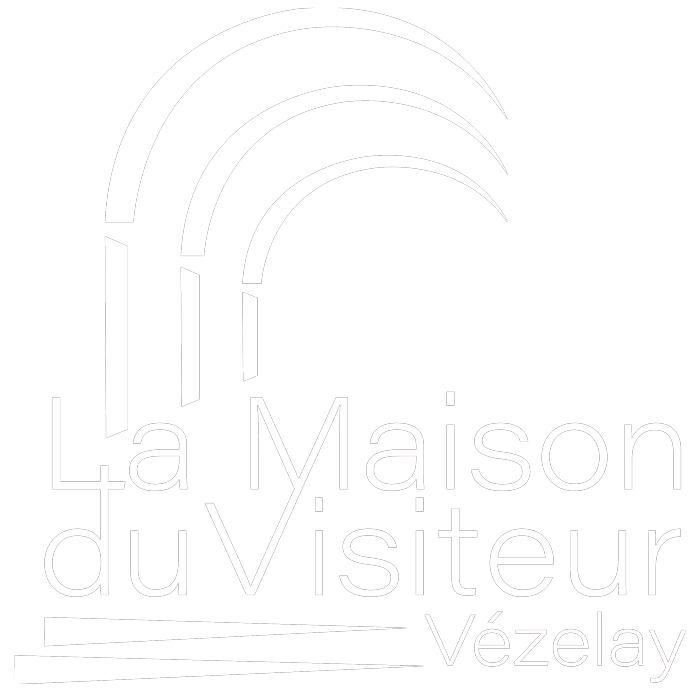Who we are
Our view
Romanesque art expresses a vision of the world capable of
to shed light on the changes taking place in our contemporary societies
they face.
When the XIIe When the 12th century speaks to the 21st !e century
Romanesque art and architecture at Vézelay
In the face of these great upheavals, the Romanesque architecture of Vézelay reaches such a peak of harmony that it can respond to the need for soothing and inner unification of anyone seeking to recharge their batteries.
Romanesque man was as much anchored to the earth as he was connected to the cosmos. The architecture and the play of light in the old abbey church bear witness to a remarkable knowledge of geometry, energy and astronomy. Romanesque sculpture combines the plant, animal, human and divine worlds. Through these images and lights, visitors are invited to rediscover their rightful place in the universe.
Romanesque images are mirrors of the human condition. Through the power of their symbols, they link people to themselves, to others and to the mystery within them.
While each site has its own iconographic particularities, at Vézelay the human being is above all called upon to straighten up, to stand up straight, to redirect his energies and passions towards a "greater being".
A sensitive experience
intelligible reading
Our approach to heritage
To be in direct contact with the Romanesque architecture of Vézelay, by looking, hearing, touching and being present, is to enter into a conversation with it. In this receptive state, the work of the past appears in all its intensity.
It reveals itself to us as a unique experience, a kind of privilege granted from the depths of time by a master builder, a craftsman, a simple labourer who have put all their sweat, imagination, knowledge and know-how at the service of the world. a huge scenography where man, the cosmos and God resonate.
Each visit is a challenge for us to to enable everyone to prepare themselves to receive the richness deposited in the stone, to let themselves be reached without a prioriIt's an opportunity to enter into a world view so different from our everyday lives, to experience a different time and a different vision of the world.
To be in direct contact with the Romanesque architecture of Vézelay, by looking, hearing, touching and being present, is to enter into a conversation with it. In this receptive state, the work of the past appears in all its intensity.
It reveals itself to us as a unique experience, a kind of privilege granted from the depths of time by a master builder, a craftsman, a simple labourer who have put all their sweat, imagination, knowledge and know-how at the service of the world. a huge scenography where man, the cosmos and God resonate.
Each visit is a challenge for us to to enable everyone to prepare themselves to receive the richness deposited in the stone, to let themselves be reached without a prioriIt's an opportunity to enter into a world view so different from our everyday lives, to experience a different time and a different vision of the world.
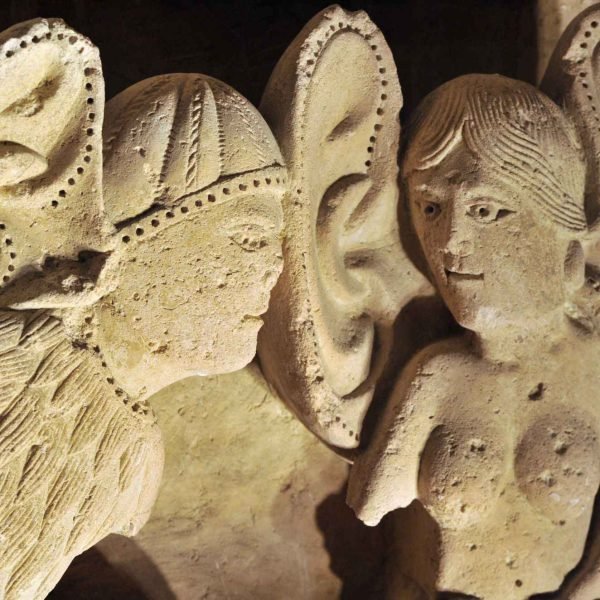
Our approach the Visitor's House
The Visitor Centre has been designed as an invitation to following in the footsteps of the builders of yesteryear take the pilgrims' route who for centuries have come to venerate the relics of Mary Magdalene, in enter into the monastic concept which underpins the work on the basilica.
Feeling and understanding what's in front of us is a genuine experience of what it means to 'know', that is to say be renewed by a life-changing encounter that surprised us on our way as visitors or pilgrims.
The Maison du Visiteur's approach is not just cultural. While discovering Vézelay requires some knowledge of history, architecture, art and religion, we are convinced that any true encounter with a work of art begins with emotion. We believe that opening up the viewer's eyes and making it easier for them to feel what they are seeing is essential if everyone is to be as involved as possible in the discovery.
While we are saturated with images, we often fail to see what we are looking at, due to a lack of awareness.attention. The simple act of looking is already a learning process. That's why we've focused on the importance of preparing visitors for their discovery of the basilica, so that they can better appreciate its beauty.
The Maison du Visiteur has been designed as a place of calm and interiorisation, to awaken the senses and stimulate the eye. Thanks to the exhibition of 3D models, light shows, demonstrations of the latest technology measuring instruments used in medieval timesinteractive question-and-answer sessions, film screenings, etc.... our introductory encounters offer an immersive journey before entering the building, allowing visitors to experience it in situ.
Such is the heart of our workunderpinned by research into the sources of Romanesque symbolism, for which we regularly call upon the expertise of other researchers Historians, anthropologists, theologians and religious, scientists and artists.
The Visitor Centre has been designed as an invitation to following in the footsteps of the builders of yesteryear take the pilgrims' route who for centuries have come to venerate the relics of Mary Magdalene, in enter into the monastic concept which underpins the work on the basilica.
Feeling and understanding what's in front of us is a genuine experience of what it means to 'know', that is to say be renewed by a life-changing encounter that surprised us on our way as visitors or pilgrims.
The Maison du Visiteur's approach is not just cultural. While discovering Vézelay requires some knowledge of history, architecture, art and religion, we are convinced that any true encounter with a work of art begins with emotion. We believe that opening up the viewer's eyes and making it easier for them to feel what they are seeing is essential if everyone is to be as involved as possible in the discovery.
While we are saturated with images, we often fail to see what we are looking at, due to a lack of awareness.attention. The simple act of looking is already a learning process. That's why we've focused on the importance of preparing visitors for their discovery of the basilica, so that they can better appreciate its beauty.
The Maison du Visiteur has been designed as a place of calm and interiorisation, to awaken the senses and stimulate the eye. Thanks to the exhibition of 3D models, light shows, demonstrations of the latest technology measuring instruments used in medieval timesinteractive question-and-answer sessions, film screenings, etc.... our introductory encounters offer an immersive journey before entering the building, allowing visitors to experience it in situ.
Such is the heart of our workunderpinned by research into the sources of Romanesque symbolism, for which we regularly call upon the expertise of other researchers Historians, anthropologists, theologians and religious, scientists and artists.
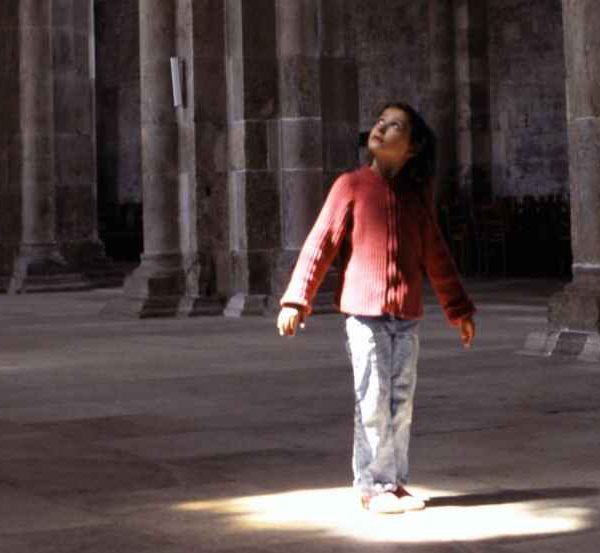
The path of symbols
The architecture and sculpture of the basilica are the fruit of a rarely equalled encounter between the faith of a prayerful and inspired monastic community and the skills of outstanding craftsmen.
Here, form and content are one and the sameEverything is a symbol, a reflection of the union of heaven and earth. The imagiers are at the height of their art, and the theology conveyed by their images is as modern as they are capable of beckoning to our contemporaries.
The need to symbolise is deeply rooted in human nature. Take children, for example. They have an almost natural ability to move through symbolic life, creating stories and inventing games that propel them towards territories without frontiers, symbolic spaces where real life seems to be played out; they talk to the trees, flowers and animals that they bury with the greatest care, and to the objects that surround them as if they were living beings. They recreate the world by naming it in new ways. In a way, they are experiencing, in a still confused but very real way, that the world truly exists for them insofar as they have given it meaning. Without realising it, they invent symbols to move seamlessly from the visible to the invisible, like the imagiers of the Romanesque capitals who cut out images to show others.
In the same way, the builders of temples, pyramids and cathedrals worked to give meaning; a quantity of stones were arranged for the sole purpose of qualifying the world. The figures themselves became numbers with symbolic value, used in construction as a means of building bridges between mankind, the cosmos and God.
Le universal fact that every human life, from birth to death, is punctuated by anniversary celebrations, powerful gestures, key words and emblematic images, show us how symbols are selfless and effective friends that connect us to something greater than ourselves.
Symbols never grow old, because they always go back to their source. When they are read, children, young people and adults can turn their hearts and minds inside out to name their aspirations to live on their feet.
The more heritage is an expression of the connected man as is the case with medieval architecture, the more its symbols will point visitors in the direction of their inner homeland!
The architecture and sculpture of the basilica are the fruit of a rarely equalled encounter between the faith of a prayerful and inspired monastic community and the skills of outstanding craftsmen.
Here, form and content are one and the sameEverything is a symbol, a reflection of the union of heaven and earth. The imagiers are at the height of their art, and the theology conveyed by their images is as modern as they are capable of beckoning to our contemporaries.
The need to symbolise is deeply rooted in human nature. Take children, for example. They have an almost natural ability to move through symbolic life, creating stories and inventing games that propel them towards territories without frontiers, symbolic spaces where real life seems to be played out; they talk to the trees, flowers and animals that they bury with the greatest care, and to the objects that surround them as if they were living beings. They recreate the world by naming it in new ways. In a way, they are experiencing, in a still confused but very real way, that the world truly exists for them insofar as they have given it meaning. Without realising it, they invent symbols to move seamlessly from the visible to the invisible, like the imagiers of the Romanesque capitals who cut out images to show others.
In the same way, the builders of temples, pyramids and cathedrals worked to give meaning; a quantity of stones were arranged for the sole purpose of qualifying the world. The figures themselves became numbers with symbolic value, used in construction as a means of building bridges between mankind, the cosmos and God.
Le universal fact that every human life, from birth to death, is punctuated by anniversary celebrations, powerful gestures, key words and emblematic images, show us how symbols are selfless and effective friends that connect us to something greater than ourselves.
Symbols never grow old, because they always go back to their source. When they are read, children, young people and adults can turn their hearts and minds inside out to name their aspirations to live on their feet.
The more heritage is an expression of the connected man as is the case with medieval architecture, the more its symbols will point visitors in the direction of their inner homeland!
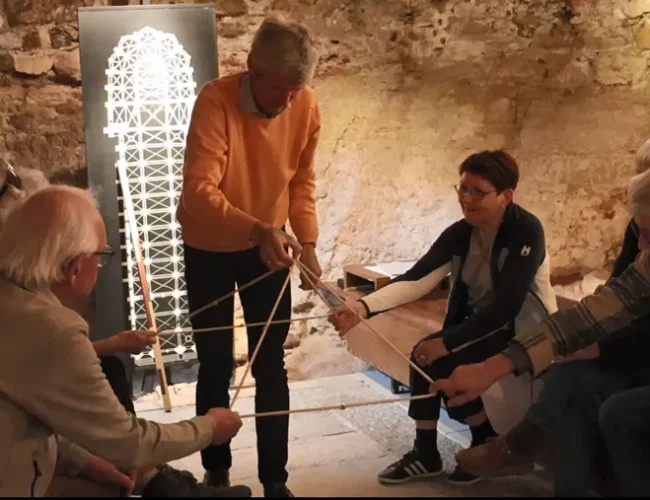
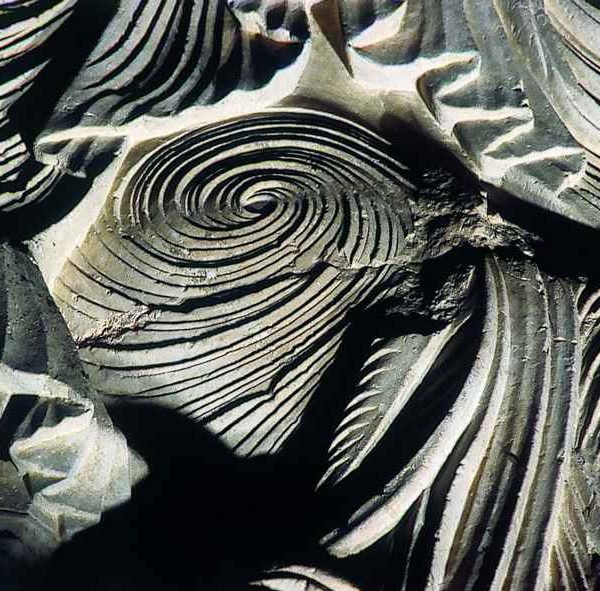
The role of beauty
In the reception of heritage, welcoming beauty is in a way a shortcut to the personal integration of the work and its symbolic dimension; the emotion experienced by the vision of the shapes, the vibration of the volumes in the light, the quality of expression of the guide, leads straight to the symbols just as the imprint of footprints on the sand leads to the deciphering of the recognition of a presence.
There are harmonious peaks in our artistic and historical heritage that inspire wonder. The Basilica is a particularly fine example of this, with its animal, plant and zodiac representations, closely linked to those of men and women, making it a veritable receptacle for the universe in the image of a God who created it "in order, measure and beauty".
Scot Erigène in the 9th century wrote: "Whether in arithmetic, geometry, music or astronomy, man can only discover the laws of the universe.harmonyHe can't invent them.
The construction of Vézelay reflects this harmonic vibration that the builders strove to transcribe into the microcosm of the church. Its beauty emerges naturally. To experience the coherence of this beauty, the path of theartistic experience is a royal road. More than any other, it knows how to articulate in a sensitive language the effort of the mason, the liturgical research of the theologian, the science of the builder, the silence of the monk, the emotion of the pilgrim...
The priority of the Maison du Visiteur is to use artistic language to guide visitors towards all the components of an art of building whose cultural and religious dimensions together make up its original face.
In the reception of heritage, welcoming beauty is in a way a shortcut to the personal integration of the work and its symbolic dimension; the emotion experienced by the vision of the shapes, the vibration of the volumes in the light, the quality of expression of the guide, leads straight to the symbols just as the imprint of footprints on the sand leads to the deciphering of the recognition of a presence.
There are harmonious peaks in our artistic and historical heritage that inspire wonder. The Basilica is a particularly fine example of this, with its animal, plant and zodiac representations, closely linked to those of men and women, making it a veritable receptacle for the universe in the image of a God who created it "in order, measure and beauty".
Scot Erigène in the 9th century wrote: "Whether in arithmetic, geometry, music or astronomy, man can only discover the laws of the universe.harmonyHe can't invent them.
The construction of Vézelay reflects this harmonic vibration that the builders strove to transcribe into the microcosm of the church. Its beauty emerges naturally. To experience the coherence of this beauty, the path of theartistic experience is a royal road. More than any other, it knows how to articulate in a sensitive language the effort of the mason, the liturgical research of the theologian, the science of the builder, the silence of the monk, the emotion of the pilgrim...
The priority of the Maison du Visiteur is to use artistic language to guide visitors towards all the components of an art of building whose cultural and religious dimensions together make up its original face.
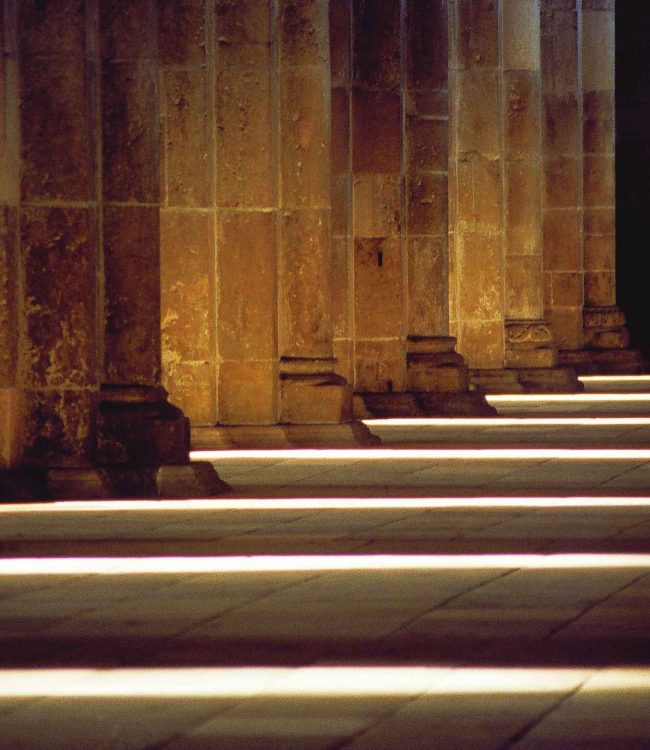
Primacy of human mediation
The choice of guides rather than audio guides dates back to the opening of the Visitor Centre. We're taking stock of its relevance at a time when the proliferation of technical means of communication is failing to overcome the lack of human relations in our contemporary societies.
Among the younger generations in particular, we can see the dehumanising effects of a profound crisis in relationships with others, leading to a loss of self-confidence and of the basic reference points needed to find one's place in society and to play a full part in it. By inviting them to be a player During their visit, they discover that they see much more than they imagined, they reveal themselves in their own words and dare to believe in their own value and uniqueness.
The guide's mission
The Maison du Visiteur guide is a ferryman from one shore to the other, from the world in front of you to the world inside you. By making the stones speak, he transmits life. Each visit is a special moment of re-creation, the fruit of the relationship between the discoverer, the guide and the sculpted stone before their eyes.
Cultivating otherness
The Romanesque world is an inexhaustible source of inspiration for those who want to question their relationship with time, money, property, beauty, science, etc. In this context, which is conducive to questions of meaning, the seminars organised by the Visitor's House offer an interdisciplinary, interreligious and intercultural cross-fertilisation of views in one- or two-day sessions.
The choice of guides rather than audio guides dates back to the opening of the Visitor Centre. We're taking stock of its relevance at a time when the proliferation of technical means of communication is failing to overcome the lack of human relations in our contemporary societies.
Among the younger generations in particular, we can see the dehumanising effects of a profound crisis in relationships with others, leading to a loss of self-confidence and of the basic reference points needed to find one's place in society and to play a full part in it. By inviting them to be a player During their visit, they discover that they see much more than they imagined, they reveal themselves in their own words and dare to believe in their own value and uniqueness.
The guide's mission
The Maison du Visiteur guide is a ferryman from one shore to the other, from the world in front of you to the world inside you. By making the stones speak, he transmits life. Each visit is a special moment of re-creation, the fruit of the relationship between the discoverer, the guide and the sculpted stone before their eyes.
Cultivating otherness
The Romanesque world is an inexhaustible source of inspiration for those who want to question their relationship with time, money, property, beauty, science, etc. In this context, which is conducive to questions of meaning, the seminars organised by the Visitor's House offer an interdisciplinary, interreligious and intercultural cross-fertilisation of views in one- or two-day sessions.
Quality tourism
At a time when large-scale, high-quality tourism is developing, particularly in UNESCO World Heritage sites, we believe it is vital to maintain cultural offerings on a human scale that prioritise the quality of personal experience through relationships rather than the quantity of information, which nevertheless has all its value if it is rooted in the soil of "knowledge" understood in the original sense of the verb to know, "to be born with".
